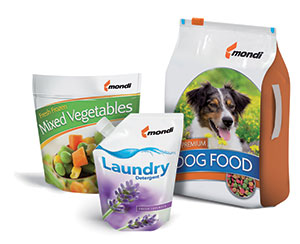Rotogravure and flexographic printing methods play leading roles today in the creation of visually striking consumer goods packaging. Both methods have distinct features and advantages and offer solutions to different packaging challenges. Recent advancements in flexographic printing are equipping consumer goods packagers with new alternatives in their printing method options. Choosing the right method for your company’s needs depends on factors such as cost, packaging type, print quantities and marketing objectives. Here are some points to consider when selecting a package-printing method.
Rotogravure’s Print Quality
Rotogravure printing, which utilizes engraved metal cylinders to transfer the printed image, has long been known for its exceptional print quality. It produces crisp colors, well-defined images and bright highlights, and maintains high consistency and uniformity across the entire print run. The process is highly cost-effective for large print quantities of 200,000 pieces or more, and is competitively priced with flexography for mid-size quantities.
Certain packaging applications traditionally call for rotogravure. For example, retort pouches for food applications, which are sterilized during processing, are typically printed using this method to meet certain chemistry requirements. Rotogravure printing is so sharp that it can be used to differentiate premium products or brands from lower-cost goods.
High-Definition Flexo
Flexographic printing, which employs flexible polymer plates with raised images to transfer ink to substrates, has seen rapid improvements recently and become a rival to rotogravure in many applications. A series of technical advances, including improved presses, anilox rollers, plate materials, dot shapes and ink systems, has produced a new generation of high-definition flexographic printing.
High-definition flexo is superior to standard flexo printing in much the same way that high-definition television outperforms standard TV. The high-definition version produces photo-quality images in resolutions up to 4,000 ppi² compared with 2,450 ppi² pixels per square inch with standard flexo. The printing plates used in high-definition flexo presses feature flattop dots instead of rounded dots. The rounded dots can create ragged edges and pitted color areas, whereas the newer flattop dots produce sharper life-like images and crisp, highly legible type.
High-definition flexo’s advantages include solid ink density and ink laydown, highlights with smooth transitions, improved reproduction of difficult images, and the ability to use line screens up to 150 lpi² lines per square inch.
Small Minimums, Quick Changeovers
Modern flexo presses are well suited for print runs as small as 15,000 - 20,000 packages. The smaller minimums are possible because flexo plates are less expensive than rotogravure plates and easy to swap out. High-definition flexo accommodates quicker changeovers and reduces the lead time from initial concept to start of printing. These features support recent packaging trends that emphasize customized packaging, regionalization and frequent promotions.
Extended Gamut Printing
Extended gamut (EG) printing is another flexo innovation. EG printing is a seven-color process. It adds the colors orange, green and violet to standard four-color process printing (cyan, magenta, yellow and black). EG printing utilizes one or a combination of the seven colors to create all printed images, eliminating the need for custom spot colors. It can generate 85 percent of the 1,800 PMS colors, compared with just 50 percent using standard four-color process printing.
The EG capability furnishes a wider color pallet to packaging designers and developers. It produces greater graphic complexity, increased photographic realism and more attractive transitions, glows and vignettes. Packaging managers can specify EG printing to create more striking product shots and improved contrasts between products and background colors.
Case Study: A Pet Food Manufacturer
Consumer brand managers often have considerable input regarding the choice of printing methods. Take the case of a Mondi North America pet food manufacturing client that markets multiple food products for dogs and cats. The products are available at different price points and in various sizes. With Mondi’s assistance, the manufacturer’s brand managers opted to print about half of their packaged brands using flexography, the other half with rotogravure. In this case there was minimal cost differential between the two printing methods. The brand managers’ personal preferences largely determined the printing method.
Full-Service Capabilities
For companies that have a need for both flexographic and rotogravure package printing, finding a packaging supplier that has both capabilities under one roof can have important advantages. For example, it provides a single point of accountability and promotes easier coordination and communication. More, a single source will appeal to brand managers who prefer that all packaging activities including converting and printing take place at one location and not be outsourced.
Rotogravure and high-definition flexo offer cost-effective solutions in a wide range of packaging applications. Package-printing suppliers typically provide professional assistance in selecting the optimal method for specific applications.

A series of technical advances, including improved presses, anilox rollers, plate materials, dot shapes and ink systems, has produced a new generation of high-definition flexographic printing.
Image courtesy of Mondi Jackson, Inc.,Consumer Goods Packaging.
Mondi Jackson, Inc.
(573) 335-4900
www.mondigroup.com
